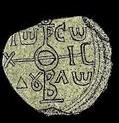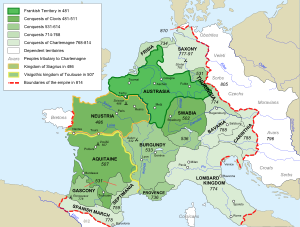
Year 768 (DCCLXVIII) was a leap year starting on Friday of the Julian calendar. The denomination 768 for this year has been used since the early medieval period, when the Anno Domini calendar era became the prevalent method in Europe for naming years.
The 800s decade ran from January 1, 800, to December 31, 809.
The 810s decade ran from January 1, 810, to December 31, 819.
The 830s decade ran from January 1, 830, to December 31, 839.
The 790s decade ran from January 1, 790, to December 31, 799.
The 780s decade ran from January 1, 780, to December 31, 789.
The 770s decade ran from January 1, 770, to December 31, 779.
The 760s decade ran from January 1, 760, to December 31, 769.
The 730s decade ran from January 1, 730, to December 31, 739.
The 700s decade ran from January 1, 700, to December 31, 709.
The 660s decade ran from January 1, 660, to December 31, 669.
The 680s decade ran from January 1, 680, to December 31, 689.

Year 788 (DCCLXXXVIII) was a leap year starting on Tuesday of the Julian calendar, the 788th year of the Common Era (CE) and Anno Domini (AD) designations, the 788th year of the 1st millennium, the 88th year of the 8th century, and the 9th year of the 780s decade. The denomination 788 for this year has been used since the early medieval period, when the Anno Domini calendar era became the prevalent method in Europe for naming years.

Year 790 (DCCXC) was a common year starting on Friday of the Julian calendar, the 790th year of the Common Era (CE) and Anno Domini (AD) designations, the 790th year of the 1st millennium, the 90th year of the 8th century, and the 1st year of the 790s decade. The denomination 790 for this year has been used since the early medieval period, when the Anno Domini calendar era became the prevalent method in Europe for naming years.

Year 797 (DCCXCVII) was a common year starting on Sunday of the Julian calendar. The denomination 797 for this year has been used since the early medieval period, when the Anno Domini calendar era became the prevalent method in Europe for naming years.

The Duchy of Benevento was the southernmost Lombard duchy in the Italian Peninsula that was centered in Benevento, a city in Southern Italy. Lombard dukes ruled Benevento from 571 to 774, when the Kingdom of the Lombards was conquered by the Kingdom of the Franks. Being cut off from the rest of the Lombard possessions by the papal Duchy of Rome, Benevento always had held some degree of independence. Only during the reigns of Grimoald and the kings from Liutprand on was the duchy closely tied to the Kingdom of the Lombards. After the fall of the in 774, the duchy became the sole Lombard territory which continued to exist as a rump state, maintaining its de facto independence for nearly 300 years as the Principality of Benevento.

Arechis II was a Duke of Benevento, in Southern Italy. He sought to expand the Beneventos' influence into areas of Italy that were still under Byzantine control, but he also had to defend against Charlemagne, who had conquered northern Italy.

Telerig was the ruler of Bulgaria from 768 to 777.

The Battle of Litosoria or Lithosoria occurred between the Byzantines and Bulgars in the fall of 774 at an unknown place named Litosoria. It was located in the border area between both states, in the region of Zagore, probably north of the line Kirklareli - Vize in modern Turkey. The result was a Byzantine victory.
In late 788 or early 789, the Byzantine Empire invaded southern Italy in an effort to detach the kingdom of the Lombards from the Frankish domination and restore the exiled king Adelchis. The expeditionary army, supported by the Sicilian theme, was defeated in a major battle by a combined force of Lombards and Franks under Duke Grimoald III of Benevento.








